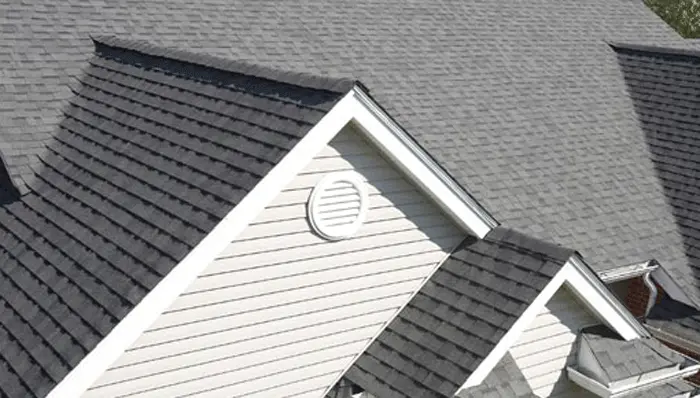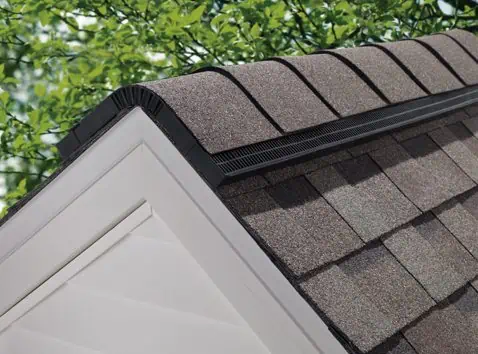It’s been hot. We’ve all felt the heat this past week and no doubt your home is feeling it as well. Your air conditioning system is feeling the load, too. Every time we hit these temperatures in the summer, your home’s air conditioning system runs more often, or it just runs flat out.
This leads to higher electrical bills, higher demand on the power grid and even power outages if it gets hot enough and the system gets overloaded.
There can be some relief for your wallet and your home.
What can I do?
Ventilation is one of the biggest improvements you can add to your roof and attic space to reduce the amount your air conditioning has to run during the summer.
I think I have good ventilation, but I’m not sure.
One way to know is to see if you have ridge vents installed. These are a good sign that your roof as a place for warm, moist air to escape your attic. Since, warm moist air rises, it can pool near the peak of your roof looking for a place to escape.
What’s a ridge vent?
A ridge vent is a protected, continuous opening at the very top of your roof. It runs the length of your roof so that there is plenty of free area for air to flow through.
A hole in the top of my roof? Sounds like a bad idea.
You’d think so, but we protect it from weather, critters, and wind very well, so there are no issues with leakage.
How did this become a thing?
The idea of attic ventilation has been around for years, but it was first documented in 1937 by Larry V. Teesdale at Forest Products Laboratory. He was trying to reduce condensation and humidity in the living space. His recommendation was to use vapor barrier below attic insulation and to provide some ventilation.
More advancements were made by various trade groups, and the recommendations for attic ventilation became standard practice in 1938 and a code-required practice by 1948.
Over the years, the ratio of floor space in the attic to ventilation free area has changed as well as the accepted products used to create the ventilation, but the principle has remained consistent.
What principle is that?
The closer you can make the temperature of the attic space match that of outside, the less trouble you’ll have with regards to condensation, mold, shingle failure, rot and a whole host of other problems.
So that’s all I need, ridge vents?
Well, no. You need a complete ventilation system combined with adequate insulation, vapor barrier, and a quality roof. But, the ridge vent might be one of the most visible aspects of your attic insulation so you can see if you have it by just looking at the peak of your roof.
What do I do if I need more help?
You can contact Pro Home Improvement to get more information on ventilation, insulation, gutters or roofing issues. We’d be more than happy to help you with anything you need.



